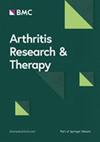羟基甾醇有助于系统性红斑狼疮皮肤病变中免疫细胞的招募
IF 4.9
2区 医学
Q1 Medicine
引用次数: 0
摘要
在系统性红斑狼疮(SLE)患者的外周血中已观察到羟基固醇代谢异常,但其在系统性红斑狼疮(SLE)皮肤病变中的作用仍不清楚。研究人员利用液相色谱-质谱联用技术(LC-MS)进行了靶向氧化脂质代谢组学分析,以量化系统性红斑狼疮皮肤病变中的氧基甾醇。免疫组化染色和单细胞测序数据分析证实了氧固醇编码酶 CH25H 和 CYP7B1 的上调。我们使用转孔室评估了对成纤维细胞介导的 PBMC 趋化性的影响。我们在系统性红斑狼疮皮肤病变中发现了氧化胆固醇代谢异常,其特点是 7-酮胆固醇、5α-6α-胆甾烷-3β,5α,6β-三醇等的水平升高。成纤维细胞是表达氧杂环醇编码基因的主要细胞,CH25H和CYP7B1的表达通过IL-1β介导的p38 MAPK和NFκB途径上调。值得注意的是,IL-1β 刺激的成纤维细胞会增强 PBMCs 的募集,而 GPR183 抑制剂会减弱这种效应。我们的研究结果揭示了成纤维细胞通过表达 CH25H 和 CYP7B1 促进系统性红斑狼疮皮肤病变中免疫细胞募集的潜在机制。这项研究强调了氧甾醇代谢在系统性红斑狼疮皮损发病机制中的重要性,并突出了系统性红斑狼疮皮损治疗的潜在治疗靶点。- 系统性红斑狼疮皮损显示出氧固醇代谢异常,成纤维细胞是CH25H和CYP7B1基因增加的主要来源。- IL-1β 介导的 p38 MAPK 和 NFκB 通路与 CH25H 和 CYP7B1 的上调有关。- GPR183抑制剂可减轻IL-1β刺激成纤维细胞所增强的PBMCs招募,从而为系统性红斑狼疮皮肤病变的治疗提供了可能。本文章由计算机程序翻译,如有差异,请以英文原文为准。
Oxysterols contribute to immune cell recruitment in SLE skin lesions
Abnormal oxysterol metabolism has been observed in the peripheral blood of SLE patients, but its role in systemic lupus erythematosus (SLE) skin lesions remains unclear. Targeted oxidized lipid metabolomics analysis using liquid chromatography-mass spectrometry (LC-MS) was performed to quantify oxysterols in SLE skin lesions. Immunohistochemical staining and single-cell sequencing data analysis confirmed the upregulation of oxysterol-encoding enzymes CH25H and CYP7B1. The impact on fibroblast-mediated PBMCs chemotaxis was assessed using a transwell chamber. We identified aberrant oxidized cholesterol metabolism in SLE skin lesions, characterized by elevated levels of 7-ketocholesterol, 5α-6α-cholestane-3β,5α,6β-triol, and so on. Fibroblasts were the primary cells expressing oxysterol-encoding genes, with CH25H and CYP7B1 expression upregulated via the IL-1β-mediated p38 MAPK and NFκB pathways. Notably, IL-1β-stimulated fibroblasts demonstrated enhanced PBMCs recruitment, which was attenuated by a GPR183 inhibitor. Our findings reveal a potential mechanism by which fibroblasts contribute to immune cell recruitment in SLE skin lesions by expression of CH25H and CYP7B1. This study underscores the significance of oxysterol metabolism in SLE skin lesion pathogenesis and highlights potential therapeutic targets for SLE skin lesion treatment. • SLE skin lesions show abnormal oxysterol metabolism, with fibroblasts being the main source of increased CH25H and CYP7B1 genes. • IL-1β-mediated p38 MAPK and NFκB pathways implicated in CH25H and CYP7B1 upregulation. • Enhanced PBMCs recruitment by IL-1β-stimulated fibroblasts can be attenuated by a GPR183 inhibitor, offering potential SLE skin lesion treatment.
求助全文
通过发布文献求助,成功后即可免费获取论文全文。
去求助
来源期刊

Arthritis Research & Therapy
RHEUMATOLOGY-
CiteScore
8.60
自引率
2.00%
发文量
261
审稿时长
14 weeks
期刊介绍:
Established in 1999, Arthritis Research and Therapy is an international, open access, peer-reviewed journal, publishing original articles in the area of musculoskeletal research and therapy as well as, reviews, commentaries and reports. A major focus of the journal is on the immunologic processes leading to inflammation, damage and repair as they relate to autoimmune rheumatic and musculoskeletal conditions, and which inform the translation of this knowledge into advances in clinical care. Original basic, translational and clinical research is considered for publication along with results of early and late phase therapeutic trials, especially as they pertain to the underpinning science that informs clinical observations in interventional studies.
 求助内容:
求助内容: 应助结果提醒方式:
应助结果提醒方式:


